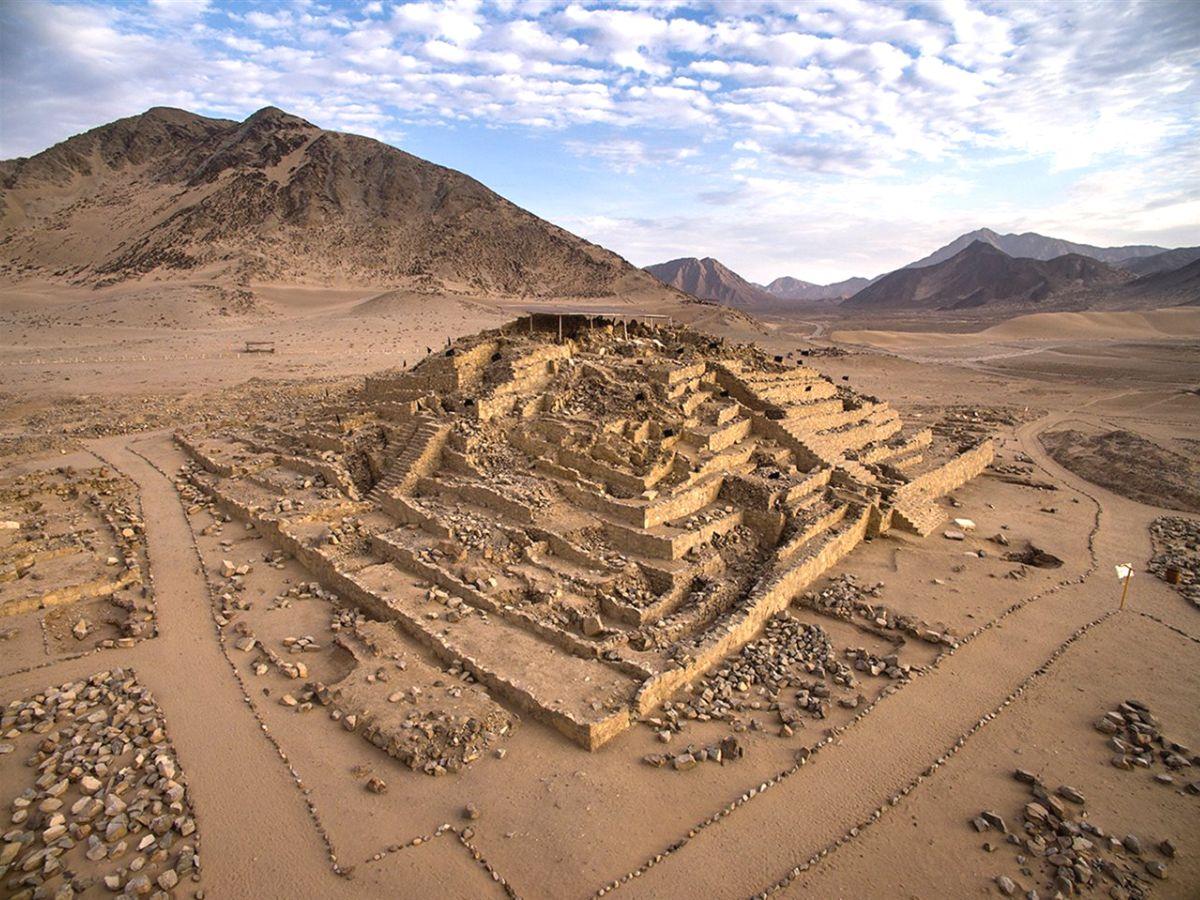
One of the most important and yet little-known cultures of the American continent is found in Peru. This is the Caral culture, whose capital was the city of the same name, which is now celebrating twenty-five years of excavations. We have spoken with Dr. Ruth Shady, director of the Caral archaeological zone, who has told us many things about this place, located in the Supe Valley, on the north-central coast of Peru, a site that is, with its 66 hectares, one of the largest in America, and about the civilization that built it, the Caral culture, considered the oldest in the American continent.
Agriculture, Fisheries, Trade
The Caral based their economy on agriculture and fishing on the coast of the Pacific Ocean, in the so-called Supe port. In the region, small settlements began to develop very early between the years 3000 and 2700 BC, which interacted with each other and exchanged products, even with other more distant populations. More complex societies were formed and between 2700 and 2550 B.C. the great city of Caral was built, a place with monumental architecture. It was at this time that new urban centers began to appear in the Supe Valley and in the neighboring Pativilca Valley, between 2550 and 2400 BC. The influence of the Caral culture was such that it reached the north of Peru, as can be seen in the Ventarrón deposit, in Lambayeque, or in other places in the south, such as in the valleys of Chillón, Rímac, Asia.
Technological Advances
As Ruth Shady exclusively explains to us, the Caral were an advanced society that developed great scientific and technological knowledge that they transmitted to other neighboring cultures. They did not live in walled cities nor did they manufacture weapons, but they did exchange resources, goods and knowledge with populations from the mountains and the jungle. They also had access to the Spondylus mollusk, very characteristic of the tropical waters of Ecuador and which played an important role in Andean societies; They also obtained sodalite, a mineral that comes from Bolivia, and even replicated, in the burial of a child, the treatment given to the dead in the Chinchorro culture of Chile, which shows that the Caral were related to other very distant cultures. geographically.
A Monumental Architecture
As an archaeologist, Dr. Shady insists that the importance of Caral is reflected in the elements of its architecture, of symbolic significance –assumed in turn by other cultures–: sunken circular plazas, niches, double-jamb doors, earthquake-resistant technology. , stepped platforms... Caral was an urban complex made up of different constructions. It lacks a walled enclosure and is located on a terrace that protected it from possible natural disasters.
The buildings were built with stone and wood from fallen trees. Six pyramids are preserved, each with a central staircase that is oriented towards certain stars. All these buildings had an altar with a central fire (circular or quadrangular in shape) and underground conduits that channeled the energy of the wind. In these complexes religious ceremonies were to be carried out that included the burning of offerings to the divinities. But one of the most striking constructions are its two enigmatic circular plazas, located in front of two pyramidal buildings. Quite possibly also related to religious ceremonies.
More:
https://www.incatrailmachu.com/en/travel-blog/caral-peru-pyramids
 = new reply since forum marked as read
= new reply since forum marked as read
